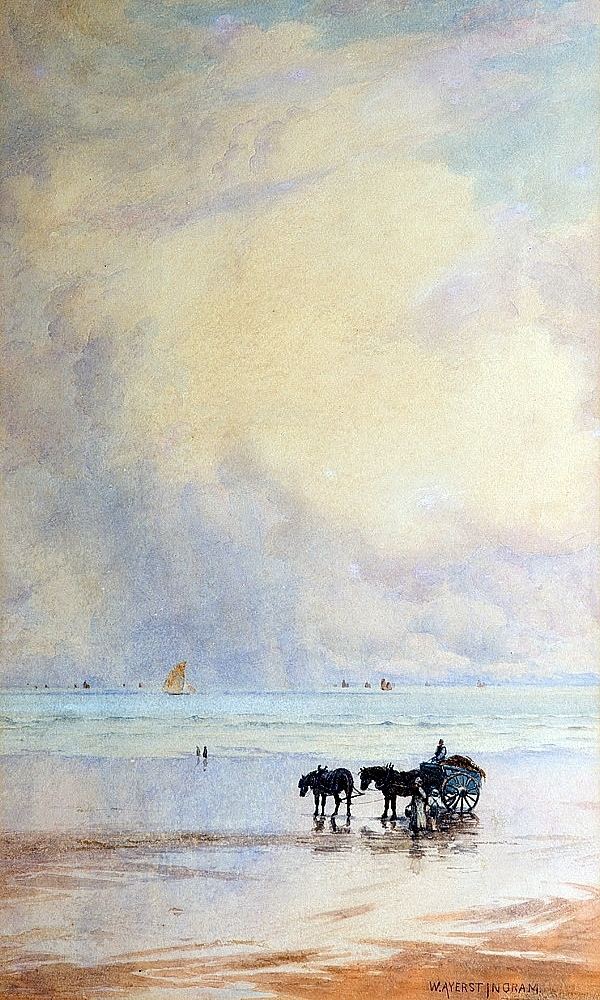Nationality English Known for Painter | Name William Ingram | |
 | ||
Education A.W. Weedon, John Steeple Died March 20, 1913, Falmouth, United Kingdom | ||
Jim the Carter Lad
William Ayerst Ingram or W. Ayerst Ingram RBA (27 April 1855 Twickenham, Surrey – 20 March 1913 Falmouth, Cornwall) was a painter and member of the Newlyn School. He did notable Landscape art and Marine art. In 1906 he joined the Royal Institute of Oil Painters and in 1907 he joined the Royal Institute of Painters in Water Colours.
Contents

Personal life and education
William Ayerst Ingram was born on 27 April 1855 in Twickenham, Surrey, England. His father was a vicar who was born in Glasgow, Scotland named Rev. G. S. Ingram who was at Staines in 1862 and the newly opened Vinewood Chapel in Richmond in 1871.
Ingram was the third son born to Reverend G.S. Ingram and his mother. It was first accepted that he would become a businessman, so it was later in his life that he began exploring artistic pursuits by studying with A.W. Weedon and John Steeple.
In 1882 Ingram moved to the Cornwall town of Falmouth. He married May Martha Fay, an American, by 1896. The couple lived in Tregurrian in Falmouth in 1911. Ingram died on 20 March 1913 in Falmouth.
Career
He set up a studio in Chelsea, London. The same year he also founded the Anglo-Australian Society and was established as its President. By this time Ingram had well-travelled, including travels to Australia, according to a fellow artist and friend, George Percy Jacomb-Hood. He became the Royal British Colonial Society of Artists' President in 1888.
Having moved to Cornwall in 1882, Ingram established friendships with people from the Newlyn School, including Laura and Harold Knight.
In 1894 Ingram and two good friends Jack Downing and Henry Scott Tuke established the Falmouth Art Gallery. From 1902 to 1904 Ingram was the Royal Cornwall Polytechnic Society's Vice-President in Falmouth. His works for 1893 A P. & O. Voyage and 1902 Waters of the Old and New Worlds exhibits reflected his world-wide travel experiences. A Saturday Review of A P. & O. Voyage stated that Ingram was adroit at capturing the "convexity" of the sea waves, but fell short in capturing the reality of some of the scenes, such as of the Australian coast, which "for the most part is incredibly monotonous both in colour and scenery..."
Works
Ingram's works included outdoor scenes, such as seascapes and landscapes, generally in oil and watercolour. A partial list of Ingram's work is:
His works, which have been compared to those of the painter Henry Moore have been in the collections of National Galleries in New South Wales and South Australia; Public Galleries in Otago, New Zealand and Bendigo, Victoria and the Guildhall Permanent Collection at the Corporation of London.
Memberships
Ingram was a member and Vice-President or President of some of the following organisations:
Exhibitions
Ingram exhibited at Dowdeswells, Royal Academy, Royal Society of British Artists, Whitechapel, NWS in 1886 and the Fine Art Society in 1888 and 1902.
